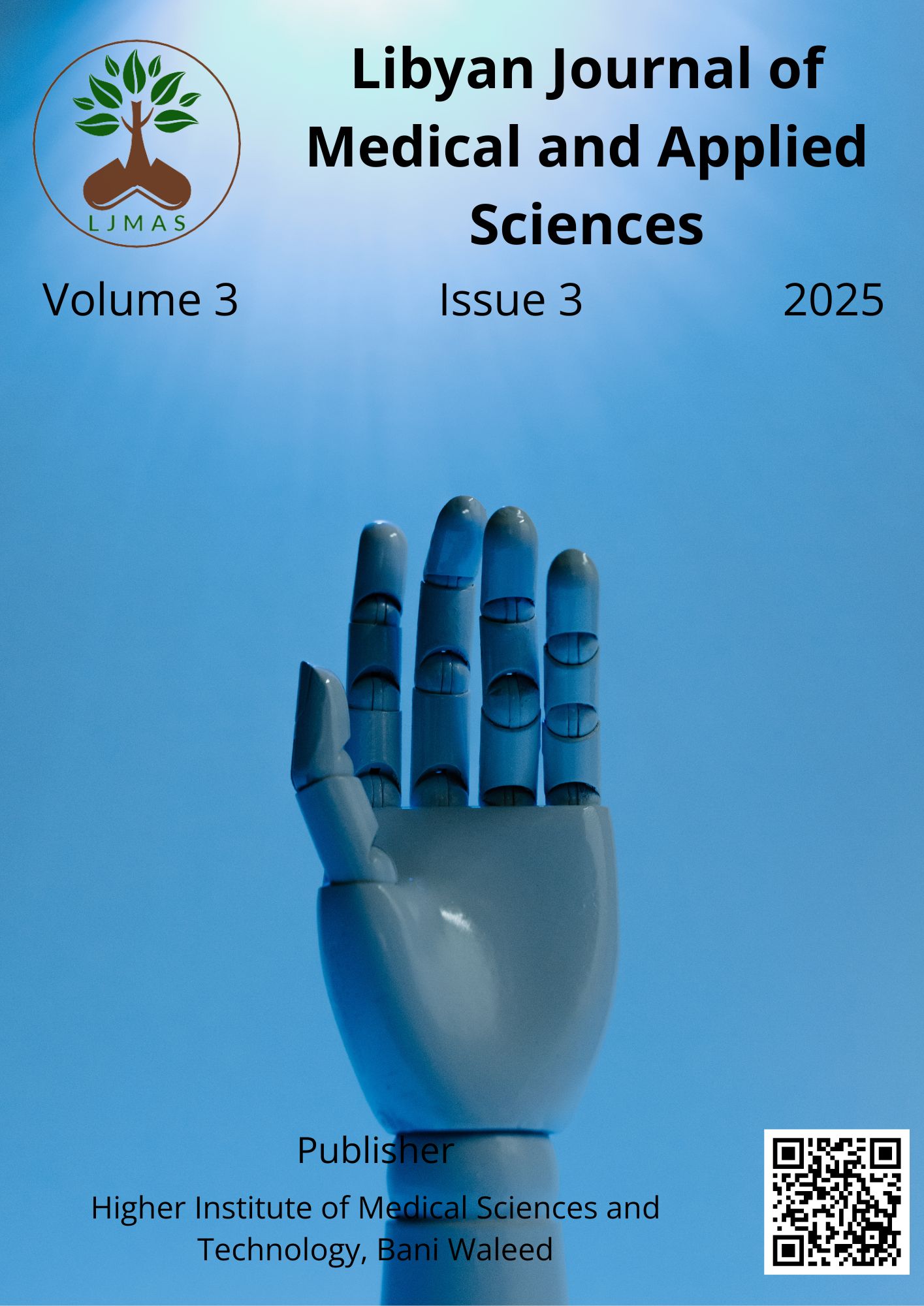Clinical and Epidemiological Characteristics of Spider Bites in Tripoli, Libya 2004-2012: a Retrospective Study
محتوى المقالة الرئيسي
الملخص
Spiders are widespread, abundant predators, making them familiar and readily accessible to people everywhere. Despite having venom glands, most spiders bite humans in some situations, only when they are annoyed, trapped or injured. Studies on spider bites in Libya are limited, neglected, and affected by misdiagnosis and underreporting. The study aimed to interpret, analyze, and characterize the clinical characteristics of spider bite patients and their variations at Tripoli Medical Center (TMC), Tripoli, Libya, between 2004 and 2012. A retrospective study of 102 reported patients with spider bites at Tripoli Medical Center during the period from 2004 to 2012. A total of 102 patients were reported, mostly in May and June (16 cases in each month). The cases were mostly reported in 2007 and 2009 (17 each). The majority of cases were in age group of 19-29 years (41 cases), and female cases (68 cases, 66.6%) were higher than males (34 cases, 33.3%). The most bitten sites were proximal extremities (71.5%). Overall, most patients suffered from erythema (90%) and swelling (36%), followed by itching (33%), necrosis (29%) and fever (17%). Spider bites are common in Libya, but most bites cause minimal or no clinical effects and do not require medical attention. Diagnosing a spider bite is extremely challenging, but a comprehensive history and careful evaluation of symptoms, with correct verification of spider bites are helpful in diagnosing and treating spider bites.
تفاصيل المقالة

هذا العمل مرخص بموجب Creative Commons Attribution 4.0 International License.





